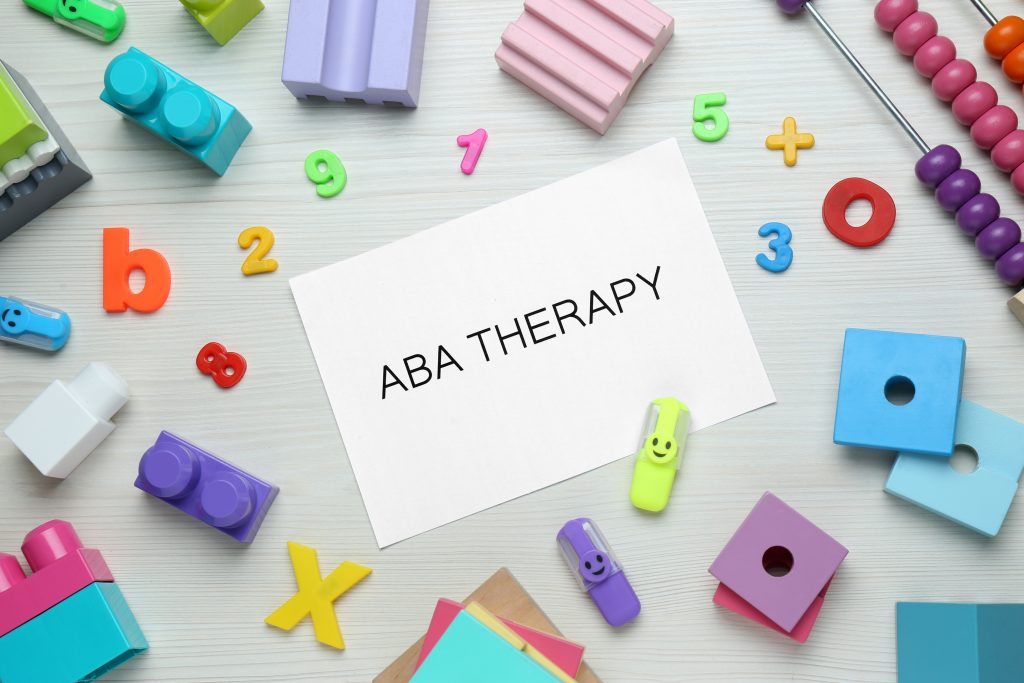ASD often affects communication, social interaction, and behavior, which can make daily functioning challenging. Therapy supports individuals with ASD in building essential skills, controlling their behaviors, and enhancing their overall quality of life. Being a parent to a child diagnosed with autism spectrum disorder (ASD), you may come across various treatment options.

One approach that’s been widely influential in supporting autistic children is Applied Behavior Analysis (ABA) therapy. This guide is here to help you, as a parent, understand how ABA therapy operates, what you can look forward to, and how it can positively impact the quality of your child’s life.
What Is ABA Therapy and How Does It Work?
ABA therapy, short for Applied Behavior Analysis, is a scientifically backed approach that focuses on improving specific behaviors, such as communication skills, social skills, and daily living skills. ABA therapy services are customized for each child, targeting behaviors that need modification while reinforcing positive behaviors through techniques like positive reinforcement. By collecting data on your child’s progress, behavior analysts can adjust treatment plans to ensure the best results.
ABA therapy helps kids with autism by simplifying complicated tasks into smaller, manageable steps, making it easier for them to learn new skills in a supportive setting. These skills range from improving communication to enhancing social interaction. A behavior technician, or registered behavior technician (RBT), usually leads therapy sessions while being supervised by a board-certified behavior analyst (BCBA).
Critical Components of ABA Therapy
ABA therapy is built on several key components designed to support the unique needs of each child with autism spectrum disorder. These components include individualized treatment plans, skilled therapists, and a range of evidence-based techniques to promote lasting behavioral changes and skill development.
1. Individualized Treatment Plans
Each child with autism spectrum disorder has their own set of needs, which is why ABA treatment plans are customized to focus on particular behaviors. During the initial assessment, a behavior analyst or BCBA conducts a functional behavior assessment to identify target behaviors and create a customized treatment plan. ABA therapy sessions are then designed to teach new skills and replace negative behaviors with positive ones, using methods like positive reinforcement and data collection to track progress.
ABA therapy incorporates various methods, like Discrete Trial Training (DTT) and Pivotal Response Training (PRT), to help with learning new skills. For younger children, the Early Start Denver Model (ESDM) helps with early intervention, targeting key developmental areas like motor skills, communication skills, and daily living skills.
2. The Role of ABA Therapists and Technicians
ABA therapists, including RBTs and BCBAs, are central to the success of ABA treatment. These professionals are trained to observe behavior patterns and apply interventions that promote positive behavior change. A registered behavior technician typically works directly with the child during therapy sessions, while board-certified behavior analysts oversee the development of the treatment plans and monitor the child’s progress.
Behavioral therapy in ABA focuses not only on correcting negative behaviors but also on supporting skill acquisition and behavior modification. For instance, the Picture Exchange Communication System (PECS) method assists kids in enhancing their communication skills. At the same time, token economies encourage positive behaviors by rewarding the child with tokens they can exchange for desired items or activities.
3. Focus on Long-Term Success
ABA therapy isn’t just about making short-term changes; it’s designed for long-term behavior support. By teaching children strategies for daily life and helping them build on new skills, ABA services aim to foster independence. For instance, as children improve their social skills or daily living skills, they also gain confidence in interacting with others and managing daily tasks.
Behavior intervention and modification methods, including behavioral assessments and ongoing data collection, ensure that therapy remains effective. Over time, ABA therapy sessions help children develop essential life skills, empowering them to navigate a variety of situations as they grow.

Why ABA Therapy Is Effective for Autistic Children
One key reason ABA therapy is so effective is its structured approach to changing behavior patterns. ABA therapists promote good behaviors and reduce the bad ones by using positive reinforcement. Over time, autistic children learn to replace negative behaviors with positive alternatives, enhancing their ability to function in daily life. With behavioral interventions tailored to each child’s specific needs, ABA treatment addresses a wide range of developmental disorders and disabilities.
Moreover, ABA therapy teaches children valuable skills, from improving communication to mastering daily routines, which significantly boosts their independence. Techniques like the Early Start Denver Model and Functional Behavior Assessments (FBA) are especially effective for young children, helping them develop motor skills and communication early on.
Conclusion: ABA Therapy Works to Support Lifelong Success
ABA therapy has shown to be really helpful for autistic kids, enabling them to build the skills necessary for success. Through a personalized approach, data collection, and evidence-based techniques like positive reinforcement and behavioral assessments, ABA treatment provides lasting results for children with autism spectrum disorders. Parents can rest easy knowing that with ABA therapy sessions, their child is getting the skills they need to tackle everyday life with confidence.
















Add Your Comment